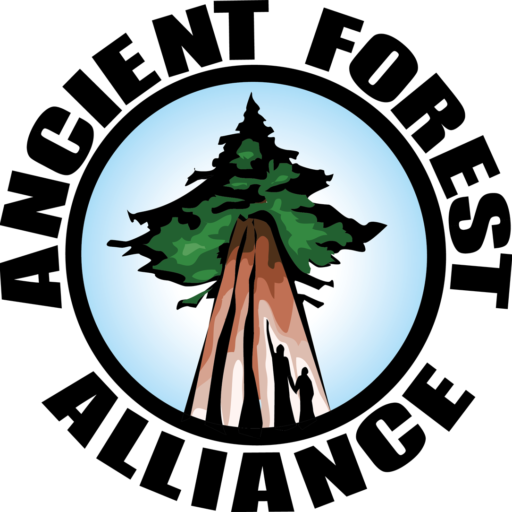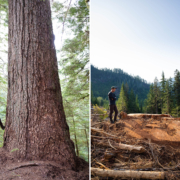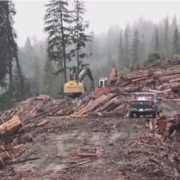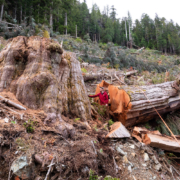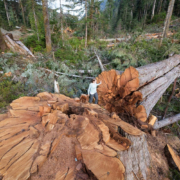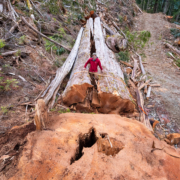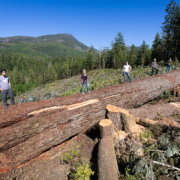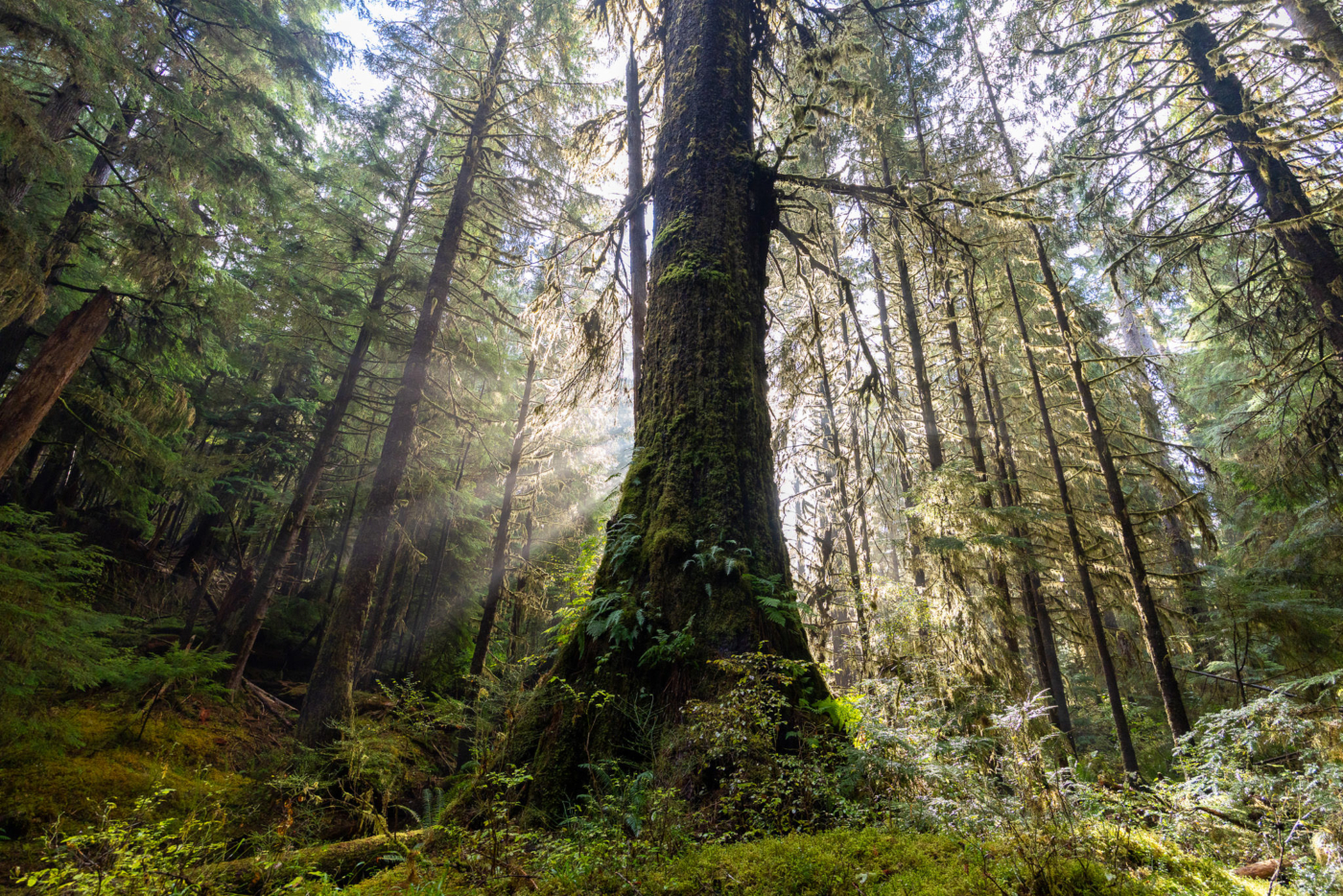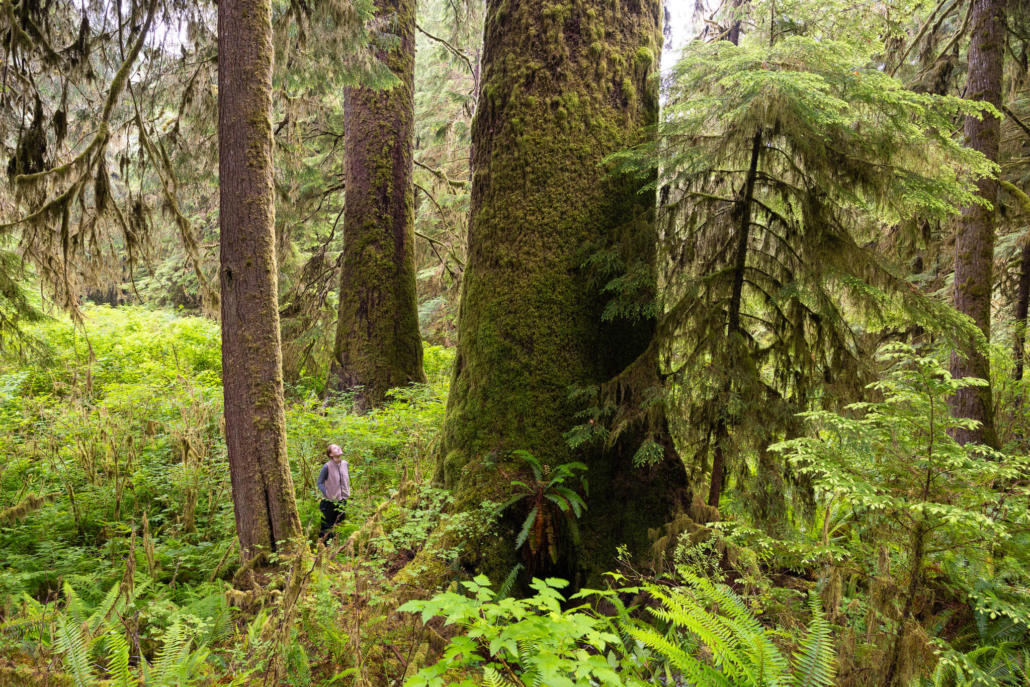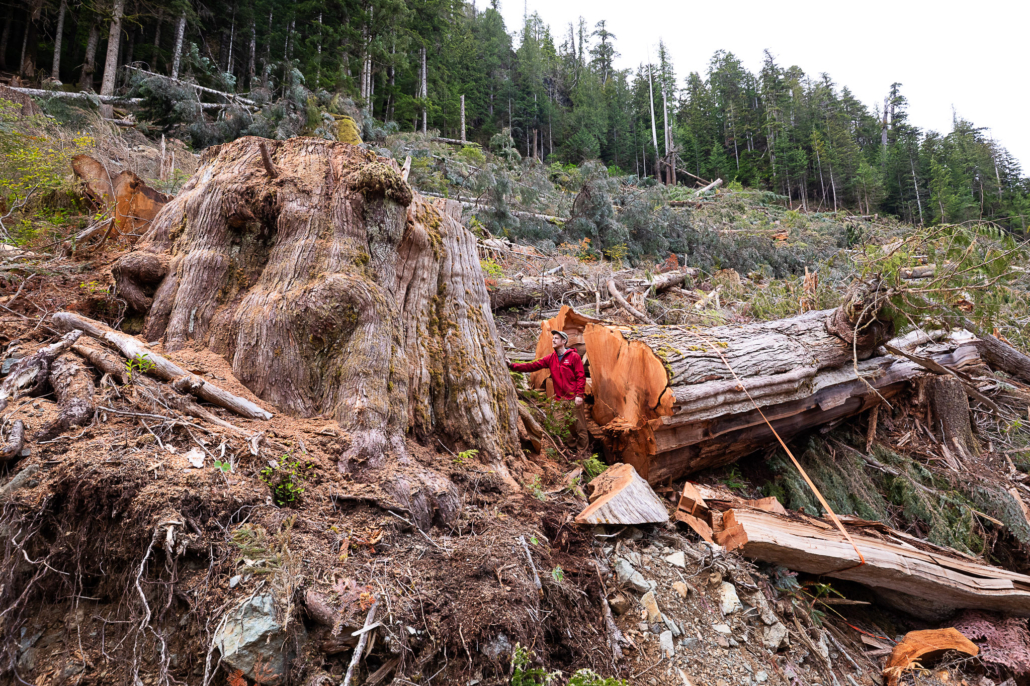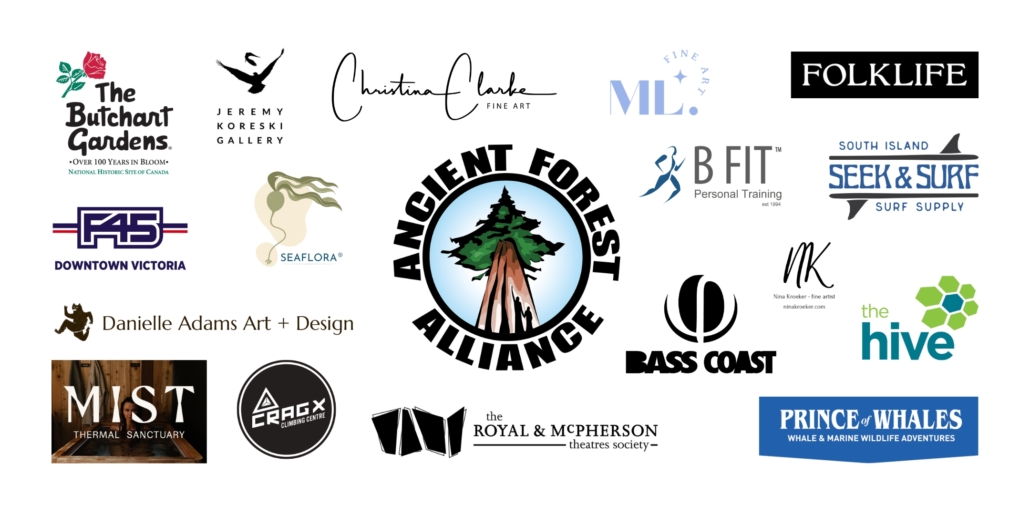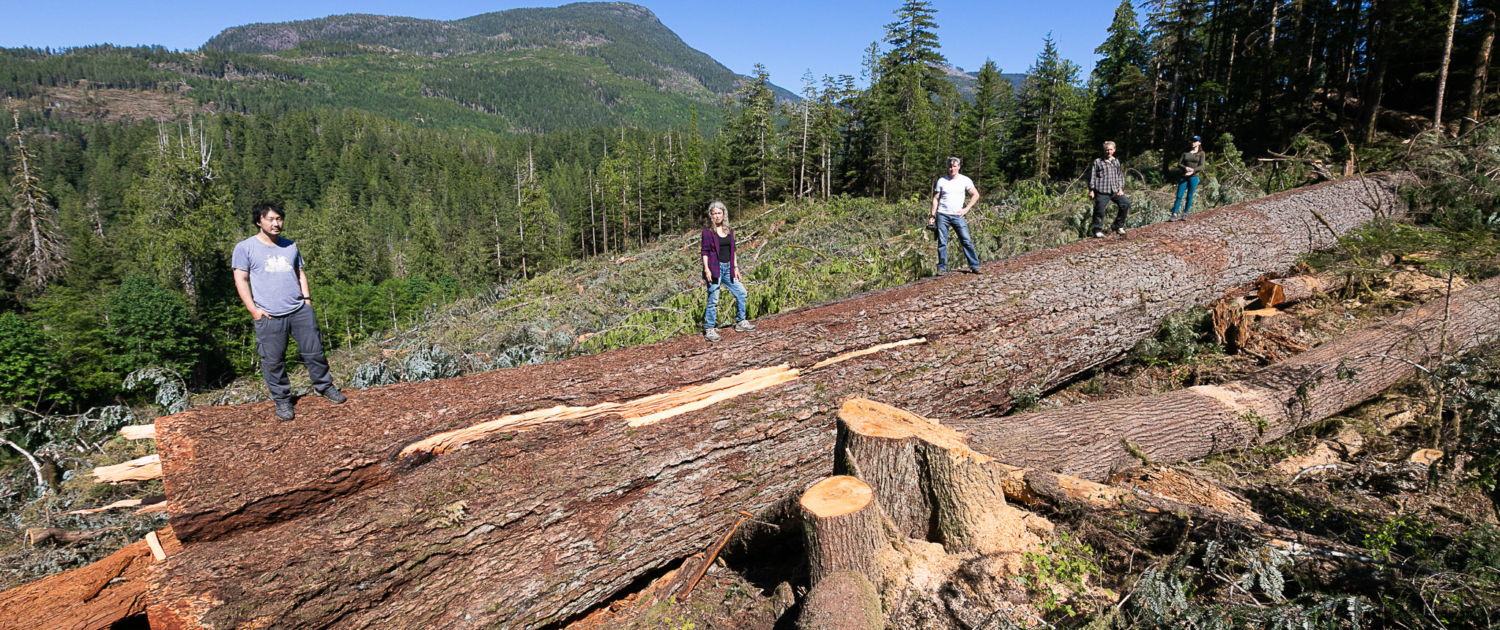 Apr 15 2025
Apr 15 2025BC Timber Sales (BCTS) Review Submission – AFA & EEA
Ancient Forest Alliance & Endangered Ecosystem Alliance’s recommendations to the BC Timber Sales Review.
Overarching Priority Recommendations:
- Prohibit cutblocks in all at-risk old-growth forests within BC Timber Sales operating areas: BCTS should implement a policy prohibiting the planning and sale of cutblocks within the 5 million hectares of unprotected old-growth forests identified by the BC government’s own independent science panel as most at-risk. This includes the 2.6 million hectares of the highest-priority at-risk old-growth forests recommended for immediate deferral by the Technical Advisory Panel (TAP), as well as the 2.4 million hectares of additional unprotected old-growth forests that also meet the TAP criteria for the biggest, oldest, and most endangered. If the BC government is serious about embracing the recommendations of its own science panel, this is the least they can do.
- Direct conservation funding dollars toward securing the deferral and protection of old-growth forests in BC Timber Sales operating areas: Given the BC government’s commitment to expanding the protection of old-growth forests in BC, the province has an opportunity and an obligation through its direct management of BC Timber Sales to take a proactive approach to achieving this goal. Therefore, we recommend allocating a proportionate share of the BC Nature Agreement and Conservation Financing Mechanism to support First Nations in their capacity, stewardship and economic development needs related to Indigenous Protected and Conserved Areas (IPCAs) on the land where BCTS operates. Most urgently, this includes providing “solutions space” funding to help First Nations offset the economic impacts of lost logging revenues when being asked to implement deferrals in the most at-risk old-growth forests in their territories.
Immediate Recommended Changes to the Current BC Timber Sales Policy Guidance on TAP Deferrals:
- Use field verification to identify and defer at-risk old-growth forests missed in the TAP mapping process – allow additions, not just subtractions, of technically misidentified stands: The TAP recommended that field verification be used to identify and defer at-risk old-growth forests that meet their criteria but were missed in the initial analysis due to gaps in BC government data. Currently, BCTS only uses field verification to remove areas from deferral status which don’t meet the TAP criteria, demonstrating a clear bias toward more old-growth logging (see BCTS guidance section “Where Field Verification is Required”). Instead, forest engineers with BCTS should use field verification to assess whether any forest within a proposed cutblock meets the criteria for deferral (not just the TAP polygons). When they do, they should be immediately added and deferred from logging, pending approval from First Nations.
- Require replacement old-growth deferrals if logging proceeds: According to BCTS deferral guidance 1. d, where First Nations indicate they do not support TAP deferrals, there is currently no requirement to identify replacement old-growth forests after logging proceeds in Ancient or Priority Big-treed polygons. Instead, replacement deferral areas should be required in these cases, as they are required by BCTS in TAP-identified Remnant Old Ecosystems (one of three categories of most at-risk old-growth identified by TAP). These deferrals must be placed in unprotected old-growth forests that could otherwise be logged in the future (i.e. within the Timber Harvesting Land Base, as opposed to areas not available for logging).
- Strengthen criteria for replacement deferrals: The Ministry of Forests’ Field Verification of Priority Old Forest Deferral Areas: Technical Guidance (p.11) states that “Replacement Priority Old Forest Deferral Areas cannot be placed in areas unavailable for forest harvesting.” However, the Ministry’s Guidance on BCTS Implementation of Technical Advisory Panel (TAP) Old Growth Deferral Polygon Recommendations states that replacement areas should be identified based on “like-for-like” ecological characteristics, rather than whether they fall within the Timber Harvesting Land Base (THLB). When a replacement deferral area must be located, BCTS should be required to identify an area that is ecologically “like-for-like” and also located within the THLB to ensure additional protections for at-risk old-growth forests that are otherwise open to logging.
- Default to honouring deferrals, not logging them: In cases where First Nations request more time to consider TAP deferrals or have yet to respond, BCTS’ current guidance 2. c. is to permit logging within polygons that meet the Ancient or Priority Big-treed criteria. BCTS should not be permitted to log in these areas until First Nations have decided on the proposed deferrals – the default must not be “ignore First Nations and just log the old-growth.”
- Provide transparency in deferral changes: BCTS should be required to make all changes and replacements to deferral areas publicly accessible in a timely and transparent manner. This can drag out for years – but there is a genuine environmental crisis, and the conservation movement will no longer acquiesce to endless heel-dragging.
Become a Leader in a Sustainable, Value-Added, Second-Growth Forestry Industry
- To support a more sustainable, value-added forest economy, an appurtenancy clause should require that logs from BCTS sales not destined for BC mills be sold through regional log sorts and manufactured within British Columbia. This would secure a guaranteed log supply for BC-based companies.
Conclusion
As a Crown agency, BC Timber Sales stands at a crossroads that affects all British Columbians. With direct government oversight, BCTS has both the opportunity and the obligation to implement bold policy changes that reflect the government’s commitments to biodiversity, climate action, and Indigenous rights. BCTS is the best vehicle for the province to lead the way on its land base toward the promised “paradigm shift” embraced by the BC NDP government in its BC Old-Growth Strategic Review panel’s recommendations. Strengthening old-growth protections within BCTS operating areas—especially the most at-risk forests identified by the province’s own science panel—would send a powerful signal that the government is serious about ending the logging of irreplaceable ecosystems and transitioning to a value-added, second-growth industry, which is the future for BC’s forest industry.
Conversely, if BCTS continues to auction off the last of the most endangered old-growth forests in the province, it will severely undermine public trust and the province’s credibility on environmental leadership.
The choice is clear: BCTS can help lead us toward a sustainable future focused on value-added products from second-growth forests. Or it can continue selling off irreplaceable ancient forests that, once gone, are lost forever.
The path BCTS chooses now will help define the legacy this government leaves for the land, communities, and generations to come.
The photos below highlight old-growth logging and forests within BC Timber Sales’ tenure on Vancouver Island, BC.
